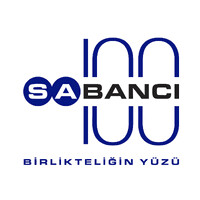
Sabanci Holding Company Cyber Security Posture
sabanci.comSabancı Holding is one of Turkey’s leading conglomerate, engaged in a wide variety of business activities through its subsidiaries and affiliates, mainly in the banking, financial services, energy, industrials, building materials and retail sectors. Our Group companies most of which are leaders in their respective sectors. As Sabancı Group, we position ourselves in new economy, with global partnerships, employment for 60 thousand, and reaching more than 40 million people on 5 continents. We invest in energy & climate, material and digital technologies, through an agile global footprint to design a sustainable future with a goal of achieving 'Net Zero' by 2050. We stride confidently towards the future through Sabancı of New Generation culture and our purpose driven, stakeholder oriented, agile and diverse organization. We are committed to ensuring equal rights and opportunities to foster a positive and an inclusive work environment and to contribute to the socio economic development of the community. With tens of thousands of talents, stakeholders and investments in multiple businesses worldwide, what connects us is our purpose: We unite Turkey and the World for a sustainable life with leading enterprises.
Sabanci Holding Company Details
sabanci-holding
10,001+ employees
0
523
Investment Management
sabanci.com
Scan still pending
SAB_2683293
In-progress
Between 900 and 1000
This score is AI-generated and less favored by cyber insurers, who prefer the TPRM score.
 Sabanci Holding Global Score
Sabanci Holding Global Score.png)

Sabanci Holding Company Scoring based on AI Models
| Model Name | Date | Description | Current Score Difference | Score |
|---|---|---|---|---|
| AVERAGE-Industry | 03-12-2025 | This score represents the average cybersecurity rating of companies already scanned within the same industry. It provides a benchmark to compare an individual company's security posture against its industry peers. | N/A | Between 900 and 1000 |
Sabanci Holding Company Cyber Security News & History
| Entity | Type | Severity | Impact | Seen | Url ID | Details | View |
|---|
Sabanci Holding Company Subsidiaries

Sabancı Holding is one of Turkey’s leading conglomerate, engaged in a wide variety of business activities through its subsidiaries and affiliates, mainly in the banking, financial services, energy, industrials, building materials and retail sectors. Our Group companies most of which are leaders in their respective sectors. As Sabancı Group, we position ourselves in new economy, with global partnerships, employment for 60 thousand, and reaching more than 40 million people on 5 continents. We invest in energy & climate, material and digital technologies, through an agile global footprint to design a sustainable future with a goal of achieving 'Net Zero' by 2050. We stride confidently towards the future through Sabancı of New Generation culture and our purpose driven, stakeholder oriented, agile and diverse organization. We are committed to ensuring equal rights and opportunities to foster a positive and an inclusive work environment and to contribute to the socio economic development of the community. With tens of thousands of talents, stakeholders and investments in multiple businesses worldwide, what connects us is our purpose: We unite Turkey and the World for a sustainable life with leading enterprises.
Access Data Using Our API

Get company history
.png)
Sabanci Holding Cyber Security News
Türkiye’s Sabanci Holding offloads Dutch cybersecurity firm Radiflow for $1
Sabanci Holding confirms it has exit the Dutch firm amid strategic restructuring, absorbing a $5 million loss from the failed investment.
Sabanci Group to acquire Radiflow in a two-phase process focused on accelerating growth
Israeli OT cybersecurity firm Radiflow announced that it is being acquired in a two-phase process by Sabanci Group, a conglomerate involved in ...
Sabanci Acquires OT Security Vendor Radiflow
Radiflow, an Israeli OT cybersecurity startup, announced that it is being acquired in a two-phase process by Sabanci Group, market leaders in ...
Turkey conglomerate sees opportunities for collaboration with Israeli startups
The Istanbul-based industrial and financial conglomerate manages a portfolio of companies in 14 countries worldwide mainly in the banking, ...

Sabanci Holding Similar Companies
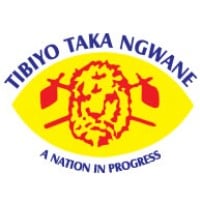
Tibiyo Taka Ngwane
Tibiyo Taka Ngwane invests in businesses that support the social, cultural and economic development of the Emaswati (the people of Eswatini). Through its diverse business portfolio - covering agriculture, agro-processing, manufacturing, services, tourism and hospitality, mining, property and media -
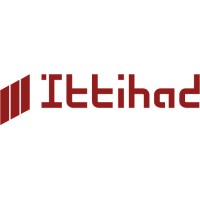
Ittihad International Investment LLC
Ittihad International Investment LLC (“The Company”) is a conglomerate that develops and manages a diversified, non-oil and gas investment portfolio in the Middle East and Egypt and has steadily grown to become a market leader in each of its verticals: o Industrials -Consumer Goods -Infrast
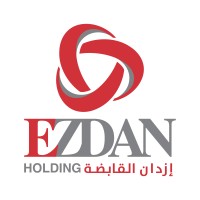
Ezdan Holding Group
The strides of Ezdan Holding Group over the last five decades have reflected the image of the State of Qatar in its development as the company was transformed from an individual to a shareholding company. The roots of Ezdan Holding Group date back to 1960, when it was founded as a private company un
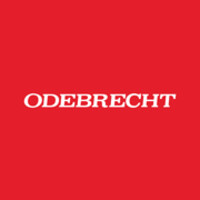
Odebrecht
Founded in 1944, Odebrecht is a Brazilian group with diverse businesses and world-class standards of quality. Its Members, guided by the Group’s own philosophy, the Odebrecht Entrepreneurial Technology (TEO), provide services and manufacture products for clients on five continents. As part of their

Self Employed Trader
This company and site will work as a landing page for self-employed traders of all 'flavors'. Content will be coming in the near future. Looking to share ideas, information, and network with other self employed traders. In the mean time, check out www.bigmiketrading.com for tons of great informati

Al Muhaidib Group
Al Muhaidib Group is an international private group of companies based in Saudi Arabia that was founded in 1943 by the late Abdulkadir Al Muhaidib. The current Chairman of the Board of Directors is Sulaiman A. Al Muhaidib. The main interest of the company was selling wholesale building materia

Frequently Asked Questions (FAQ) on Cybersecurity Incidents
Sabanci Holding CyberSecurity History Information
Total Incidents: According to Rankiteo, Sabanci Holding has faced 0 incidents in the past.
Incident Types: As of the current reporting period, Sabanci Holding has not encountered any cybersecurity incidents.
Total Financial Loss: The total financial loss from these incidents is estimated to be {total_financial_loss}.
Cybersecurity Posture: The company's overall cybersecurity posture is described as Sabancı Holding is one of Turkey’s leading conglomerate, engaged in a wide variety of business activities through its subsidiaries and affiliates, mainly in the banking, financial services, energy, industrials, building materials and retail sectors. Our Group companies most of which are leaders in their respective sectors. As Sabancı Group, we position ourselves in new economy, with global partnerships, employment for 60 thousand, and reaching more than 40 million people on 5 continents. We invest in energy & climate, material and digital technologies, through an agile global footprint to design a sustainable future with a goal of achieving 'Net Zero' by 2050. We stride confidently towards the future through Sabancı of New Generation culture and our purpose driven, stakeholder oriented, agile and diverse organization. We are committed to ensuring equal rights and opportunities to foster a positive and an inclusive work environment and to contribute to the socio economic development of the community. With tens of thousands of talents, stakeholders and investments in multiple businesses worldwide, what connects us is our purpose: We unite Turkey and the World for a sustainable life with leading enterprises..
Detection and Response: The company detects and responds to cybersecurity incidents through {description_of_detection_and_response_process}.
Incident Details
Incident 1: Ransomware Attack
Title: {Incident_Title}
Description: {Brief_description_of_the_incident}
Date Detected: {Detection_Date}
Date Publicly Disclosed: {Disclosure_Date}
Date Resolved: {Resolution_Date}
Type: {Type_of_Attack}
Attack Vector: {Attack_Vector}
Vulnerability Exploited: {Vulnerability}
Threat Actor: {Threat_Actor}
Motivation: {Motivation}
Incident 2: Data Breach
Title: {Incident_Title}
Description: {Brief_description_of_the_incident}
Date Detected: {Detection_Date}
Date Publicly Disclosed: {Disclosure_Date}
Date Resolved: {Resolution_Date}
Type: {Type_of_Attack}
Attack Vector: {Attack_Vector}
Vulnerability Exploited: {Vulnerability}
Threat Actor: {Threat_Actor}
Motivation: {Motivation}
Common Attack Types: As of now, the company has not encountered any reported incidents involving common cyberattacks.
Identification of Attack Vectors: The company identifies the attack vectors used in incidents through {description_of_identification_process}.
Impact of the Incidents
Incident 1: Ransomware Attack
Financial Loss: {Financial_Loss}
Data Compromised: {Data_Compromised}
Systems Affected: {Systems_Affected}
Downtime: {Downtime}
Operational Impact: {Operational_Impact}
Conversion Rate Impact: {Conversion_Rate_Impact}
Revenue Loss: {Revenue_Loss}
Customer Complaints: {Customer_Complaints}
Brand Reputation Impact: {Brand_Reputation_Impact}
Legal Liabilities: {Legal_Liabilities}
Identity Theft Risk: {Identity_Theft_Risk}
Payment Information Risk: {Payment_Information_Risk}
Incident 2: Data Breach
Financial Loss: {Financial_Loss}
Data Compromised: {Data_Compromised}
Systems Affected: {Systems_Affected}
Downtime: {Downtime}
Operational Impact: {Operational_Impact}
Conversion Rate Impact: {Conversion_Rate_Impact}
Revenue Loss: {Revenue_Loss}
Customer Complaints: {Customer_Complaints}
Brand Reputation Impact: {Brand_Reputation_Impact}
Legal Liabilities: {Legal_Liabilities}
Identity Theft Risk: {Identity_Theft_Risk}
Payment Information Risk: {Payment_Information_Risk}
Average Financial Loss: The average financial loss per incident is {average_financial_loss}.
Commonly Compromised Data Types: The types of data most commonly compromised in incidents are {list_of_commonly_compromised_data_types}.
Incident 1: Ransomware Attack
Entity Name: {Entity_Name}
Entity Type: {Entity_Type}
Industry: {Industry}
Location: {Location}
Size: {Size}
Customers Affected: {Customers_Affected}
Incident 2: Data Breach
Entity Name: {Entity_Name}
Entity Type: {Entity_Type}
Industry: {Industry}
Location: {Location}
Size: {Size}
Customers Affected: {Customers_Affected}
Response to the Incidents
Incident 1: Ransomware Attack
Incident Response Plan Activated: {Yes/No}
Third Party Assistance: {Yes/No}
Law Enforcement Notified: {Yes/No}
Containment Measures: {Containment_Measures}
Remediation Measures: {Remediation_Measures}
Recovery Measures: {Recovery_Measures}
Communication Strategy: {Communication_Strategy}
Adaptive Behavioral WAF: {Adaptive_Behavioral_WAF}
On-Demand Scrubbing Services: {On_Demand_Scrubbing_Services}
Network Segmentation: {Network_Segmentation}
Enhanced Monitoring: {Enhanced_Monitoring}
Incident 2: Data Breach
Incident Response Plan Activated: {Yes/No}
Third Party Assistance: {Yes/No}
Law Enforcement Notified: {Yes/No}
Containment Measures: {Containment_Measures}
Remediation Measures: {Remediation_Measures}
Recovery Measures: {Recovery_Measures}
Communication Strategy: {Communication_Strategy}
Adaptive Behavioral WAF: {Adaptive_Behavioral_WAF}
On-Demand Scrubbing Services: {On_Demand_Scrubbing_Services}
Network Segmentation: {Network_Segmentation}
Enhanced Monitoring: {Enhanced_Monitoring}
Incident Response Plan: The company's incident response plan is described as {description_of_incident_response_plan}.
Third-Party Assistance: The company involves third-party assistance in incident response through {description_of_third_party_involvement}.
Data Breach Information
Incident 2: Data Breach
Type of Data Compromised: {Type_of_Data}
Number of Records Exposed: {Number_of_Records}
Sensitivity of Data: {Sensitivity_of_Data}
Data Exfiltration: {Yes/No}
Data Encryption: {Yes/No}
File Types Exposed: {File_Types}
Personally Identifiable Information: {Yes/No}
Prevention of Data Exfiltration: The company takes the following measures to prevent data exfiltration: {description_of_prevention_measures}.
Handling of PII Incidents: The company handles incidents involving personally identifiable information (PII) through {description_of_handling_process}.
Ransomware Information
Incident 1: Ransomware Attack
Ransom Demanded: {Ransom_Amount}
Ransom Paid: {Ransom_Paid}
Ransomware Strain: {Ransomware_Strain}
Data Encryption: {Yes/No}
Data Exfiltration: {Yes/No}
Ransom Payment Policy: The company's policy on paying ransoms in ransomware incidents is described as {description_of_ransom_payment_policy}.
Data Recovery from Ransomware: The company recovers data encrypted by ransomware through {description_of_data_recovery_process}.
Regulatory Compliance
Incident 1: Ransomware Attack
Regulations Violated: {Regulations_Violated}
Fines Imposed: {Fines_Imposed}
Legal Actions: {Legal_Actions}
Regulatory Notifications: {Regulatory_Notifications}
Incident 2: Data Breach
Regulations Violated: {Regulations_Violated}
Fines Imposed: {Fines_Imposed}
Legal Actions: {Legal_Actions}
Regulatory Notifications: {Regulatory_Notifications}
Regulatory Frameworks: The company complies with the following regulatory frameworks regarding cybersecurity: {list_of_regulatory_frameworks}.
Ensuring Regulatory Compliance: The company ensures compliance with regulatory requirements through {description_of_compliance_measures}.
Lessons Learned and Recommendations
Incident 1: Ransomware Attack
Lessons Learned: {Lessons_Learned}
Incident 2: Data Breach
Lessons Learned: {Lessons_Learned}
Incident 1: Ransomware Attack
Recommendations: {Recommendations}
Incident 2: Data Breach
Recommendations: {Recommendations}
Key Lessons Learned: The key lessons learned from past incidents are {list_of_key_lessons_learned}.
Implemented Recommendations: The company has implemented the following recommendations to improve cybersecurity: {list_of_implemented_recommendations}.
References
Additional Resources: Stakeholders can find additional resources on cybersecurity best practices at {list_of_additional_resources}.
Investigation Status
Incident 1: Ransomware Attack
Investigation Status: {Investigation_Status}
Incident 2: Data Breach
Investigation Status: {Investigation_Status}
Communication of Investigation Status: The company communicates the status of incident investigations to stakeholders through {description_of_communication_process}.
Stakeholder and Customer Advisories
Incident 1: Ransomware Attack
Stakeholder Advisories: {Stakeholder_Advisories}
Customer Advisories: {Customer_Advisories}
Incident 2: Data Breach
Stakeholder Advisories: {Stakeholder_Advisories}
Customer Advisories: {Customer_Advisories}
Advisories Provided: The company provides the following advisories to stakeholders and customers following an incident: {description_of_advisories_provided}.
Initial Access Broker
Incident 1: Ransomware Attack
Entry Point: {Entry_Point}
Reconnaissance Period: {Reconnaissance_Period}
Backdoors Established: {Backdoors_Established}
High Value Targets: {High_Value_Targets}
Data Sold on Dark Web: {Yes/No}
Incident 2: Data Breach
Entry Point: {Entry_Point}
Reconnaissance Period: {Reconnaissance_Period}
Backdoors Established: {Backdoors_Established}
High Value Targets: {High_Value_Targets}
Data Sold on Dark Web: {Yes/No}
Monitoring and Mitigation of Initial Access Brokers: The company monitors and mitigates the activities of initial access brokers through {description_of_monitoring_and_mitigation_measures}.
Post-Incident Analysis
Incident 1: Ransomware Attack
Root Causes: {Root_Causes}
Corrective Actions: {Corrective_Actions}
Incident 2: Data Breach
Root Causes: {Root_Causes}
Corrective Actions: {Corrective_Actions}
Post-Incident Analysis Process: The company's process for conducting post-incident analysis is described as {description_of_post_incident_analysis_process}.
Corrective Actions Taken: The company has taken the following corrective actions based on post-incident analysis: {list_of_corrective_actions_taken}.
Additional Questions
General Information
Ransom Payment History: The company has {paid/not_paid} ransoms in the past.
Last Ransom Demanded: The amount of the last ransom demanded was {last_ransom_amount}.
Last Attacking Group: The attacking group in the last incident was {last_attacking_group}.
Incident Details
Most Recent Incident Detected: The most recent incident detected was on {most_recent_incident_detected_date}.
Most Recent Incident Publicly Disclosed: The most recent incident publicly disclosed was on {most_recent_incident_publicly_disclosed_date}.
Most Recent Incident Resolved: The most recent incident resolved was on {most_recent_incident_resolved_date}.
Impact of the Incidents
Highest Financial Loss: The highest financial loss from an incident was {highest_financial_loss}.
Most Significant Data Compromised: The most significant data compromised in an incident was {most_significant_data_compromised}.
Most Significant System Affected: The most significant system affected in an incident was {most_significant_system_affected}.
Response to the Incidents
Third-Party Assistance in Most Recent Incident: The third-party assistance involved in the most recent incident was {third_party_assistance_in_most_recent_incident}.
Containment Measures in Most Recent Incident: The containment measures taken in the most recent incident were {containment_measures_in_most_recent_incident}.
Data Breach Information
Most Sensitive Data Compromised: The most sensitive data compromised in a breach was {most_sensitive_data_compromised}.
Number of Records Exposed: The number of records exposed in the most significant breach was {number_of_records_exposed}.
Ransomware Information
Highest Ransom Demanded: The highest ransom demanded in a ransomware incident was {highest_ransom_demanded}.
Highest Ransom Paid: The highest ransom paid in a ransomware incident was {highest_ransom_paid}.
Regulatory Compliance
Highest Fine Imposed: The highest fine imposed for a regulatory violation was {highest_fine_imposed}.
Most Significant Legal Action: The most significant legal action taken for a regulatory violation was {most_significant_legal_action}.
Lessons Learned and Recommendations
Most Significant Lesson Learned: The most significant lesson learned from past incidents was {most_significant_lesson_learned}.
Most Significant Recommendation Implemented: The most significant recommendation implemented to improve cybersecurity was {most_significant_recommendation_implemented}.
References
Most Recent Source: The most recent source of information about an incident is {most_recent_source}.
Most Recent URL for Additional Resources: The most recent URL for additional resources on cybersecurity best practices is {most_recent_url}.
Investigation Status
Current Status of Most Recent Investigation: The current status of the most recent investigation is {current_status_of_most_recent_investigation}.
Stakeholder and Customer Advisories
Most Recent Stakeholder Advisory: The most recent stakeholder advisory issued was {most_recent_stakeholder_advisory}.
Most Recent Customer Advisory: The most recent customer advisory issued was {most_recent_customer_advisory}.
Initial Access Broker
Most Recent Entry Point: The most recent entry point used by an initial access broker was {most_recent_entry_point}.
Most Recent Reconnaissance Period: The most recent reconnaissance period for an incident was {most_recent_reconnaissance_period}.
Post-Incident Analysis
Most Significant Root Cause: The most significant root cause identified in post-incident analysis was {most_significant_root_cause}.
Most Significant Corrective Action: The most significant corrective action taken based on post-incident analysis was {most_significant_corrective_action}.
What Do We Measure?
















Every week, Rankiteo analyzes billions of signals to give organizations a sharper, faster view of emerging risks. With deeper, more actionable intelligence at their fingertips, security teams can outpace threat actors, respond instantly to Zero-Day attacks, and dramatically shrink their risk exposure window.
These are some of the factors we use to calculate the overall score:
Identify exposed access points, detect misconfigured SSL certificates, and uncover vulnerabilities across the network infrastructure.
Gain visibility into the software components used within an organization to detect vulnerabilities, manage risk, and ensure supply chain security.
Monitor and manage all IT assets and their configurations to ensure accurate, real-time visibility across the company's technology environment.
Leverage real-time insights on active threats, malware campaigns, and emerging vulnerabilities to proactively defend against evolving cyberattacks.




